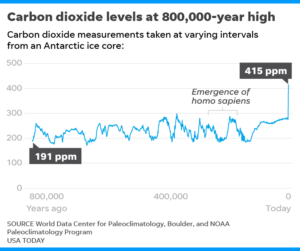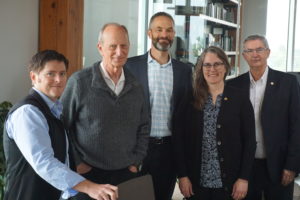Earlier this month, the Mauna Loa Observatory in Hawaii recorded carbon dioxide levels that surpassed 415 parts per million. That’s the highest level in recorded human history. As the potentially devastating impacts from carbon-fueled climate change loom, many cities and states are scrambling to address carbon emissions from buildings, which account for 40% of the energy use in the United States and nearly 40% of the nation’s carbon emissions.
Cities’ and states’ toughest challenge around reducing buildings’ carbon emissions is instituting efficiency improvements that the market can rapidly adopt. Architects, engineers, builders and the built environment sector must embrace renewable energy, electric vehicle charging, and a raft of other improvements to reach these ambitious, but necessary, targets.
Two new agreements signed last week send a strong signal that prominent building industry organizations are joining the expanding getting to zero energy and zero carbon movement. Both ASHRAE and the U.S. Green Building Council (USGBC) signed agreements with New Buildings Institute this month committing the organizations to work together on zero energy and zero carbon emissions building leadership and market development. Zero energy homes and commercial buildings are highly energy efficient and consume only as much energy as is produced by clean, renewable resources over the course of a year. Zero carbon buildings achieve a “carbon balance” in the same manner meaning onsite renewables offset any carbon emitted from sources that power the building.
The agreements were signed May 14 at the Bullitt Center—a zero energy and zero carbon building in Seattle—by NBI CEO Ralph DiNola; 2018-2019 ASHRAE President Sheila J. Hayter, P.E; and USGBC Senior Vice President Brendan Owens. Also on hand were Earth Day founder and Bullitt Foundation President and CEO Denis Hayes, as well as the incoming 2019-2020 ASHRAE President Darryl Boyce. Aspects of the collaborations include: offering advanced education and design guidance for delivering on advanced energy buildings, and advancing codes and policies that will drive higher efficiency outcomes for residential and commercial structures.
“Our partnership with ASHRAE and USGBC represents the power of our collective impact to moving the built environment toward a new energy future that is zero energy and zero carbon emissions,” said NBI CEO Ralph DiNola. “We are excited to leverage this collaboration to better support building industry professionals with tools, resources, training and education to rapidly increase the number of projects.”
The potential collective impact of these organizations can bring about the changes needed to curb carbon emissions resulting from the built environment. With over 60,000 members, ASHRAE represents a global brain trust of engineering expertise that will create the innovative solutions for reducing the energy needs of buildings and limiting their carbon footprint.
“ASHRAE believes in the impact of our collaborative efforts in accelerating meaningful progress toward optimizing the design and performance of buildings,” said 2018-2019 ASHRAE President Sheila J. Hayter, P.E. “NBI’s commitment to better energy performance and emission reductions in buildings aligns well with ASHRAE’s industry longstanding leadership in advancing the growth and innovation of the built environment. We are pleased to sign this MoU and look forward to working with NBI.” This agreement compliments Ms. Hayter’s theme for the Society year “Building Our New Energy Future.”
USGBC’s global network includes more than 203,000 professionals who have earned a LEED credential to advance sustainable design, construction and operations in the built environment. As part of the agreement, USGBC and NBI will work to enhance social equity, public health and resilience associated with energy and energy systems and communicate these achievements through platforms like USGBC’s Living Standard campaign.
“USGBC and NBI missions are closely aligned, which is reflected in our collective efforts to advance zero energy buildings and support grid integration over the past five years,” said Mahesh Ramanujam, president and CEO, USGBC. “We believe that net zero is a powerful target that will move the entire industry forward, and we are excited to continue to accelerate our partnership to collectively build a more sustainable, regenerative future and enhance the health and well-being for not only building occupants, but all of humanity.”
In addition to these collaborations, NBI is challenging leaders in the zero energy and zero carbon buildings market to a #22by22Challenge that kicked off on May 20 and calls for nearly 3,000 building professionals to speak to 22 colleagues and clients in 22 days about Getting to Zero in the built environment. Why 22? The median energy use intensity (EUI) of a zero energy building is 22.6 and should be our target energy performance for most buildings.
To learn more about the Challenge and how you can support zero energy and zero carbon market development, contact webly@newbuildings.org. NBI also provides resources for those wanting to learn more through our Getting to Zero Resource Hub at http://gettingtozeroforum.org/resource-hub/.
Stacey Hobart, Communications Director
